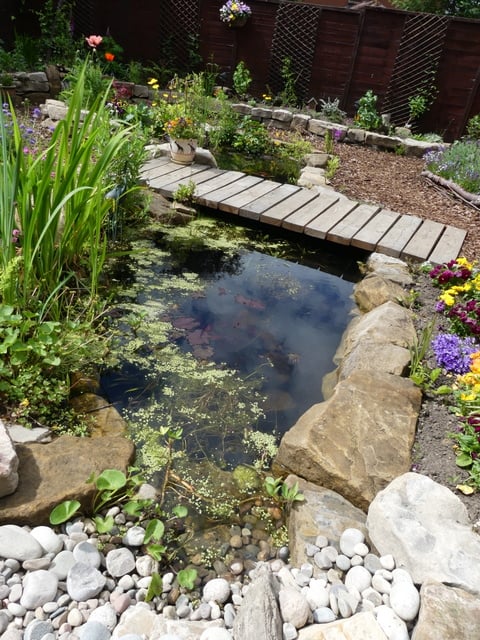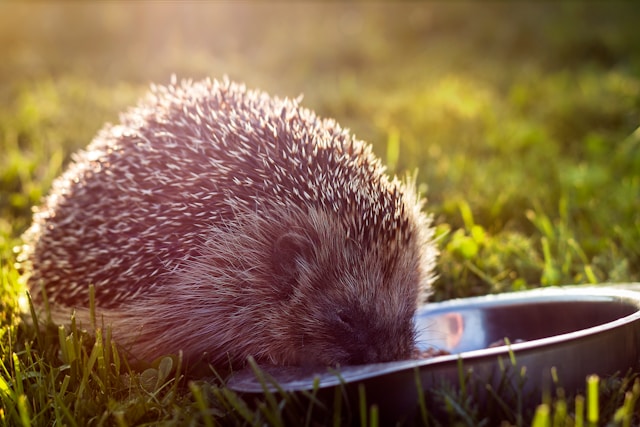Hedgehogs need to get enough water to stay healthy. They can find this in the insects that they eat, in the dew or by drinking from puddles. But when there has been a lack of rain, then the ground is drier, insects can be harder to find and less natural sources of water are available.
Providing a constant supply of fresh water for hedgehogs throughout the year is a fantastic thing you can do to help them. It can often be the difference between life and death when the weather is dry and especially important when it gets hot. I have seen this first-hand in Dunbar with more reports of unwell hedgehogs during these conditions, often ill due to dehydration.
So, how best can you do this? Well, the simplest way is to put out a dish of water on the ground. It must be heavy enough to stop hedgehogs tipping it over (as they are quite clumsy) and shallow enough for all ages of hedgehogs to be able to reach in to drink. Pop in a pebble or two to break the surface water and allow insects to crawl out if they fly in. Terracotta plant pot bases are cheap to buy and ideal for this. The only issue is remembering to top it up every night.
To avoid forgetting, then perhaps you might consider a water station which has the similar characteristics (heavy and shallow) but has a larger supply of water available to help avoid it running out. There are various types you can buy but the ones we use for the Pledgehog Project (and are cheap) are pet water stations from Home Bargains. (If you have one already, a tip for cleaning the inside is to add a little rice and fill with some water then shake hard!).
The icing on the cake, of course, would be to have a water feature in your outdoor space which has access for hedgehogs to drink from, but it’s extremely important that they can get out easily if they fall in. Keeping water levels high can make it easier for hedgehogs to drink without leaning over too much. They can swim well but will drown if they can’t find the way out if there are steep sides. If possible, it’s best to create a gentle slope at the side like a beach, but if this isn’t possible then adding stones or a ramp to help them out is essential. I recently saw a hedgehog ramp being sold by the RSPCA. I’d be interested to hear if anyone tries it out.

Creating a wildlife pond is one of the best things you can do for all sorts of wildlife. It takes a bit of work but the effort is worth it when you have all types of visitors coming for a drink or to bathe, damsel or dragonflies darting around, frogs, toads or newts and even more life once you look into the water. I built a pond following the advice of Joel Ashton a couple of years ago and found his videos really helpful to guide me and provide inspiration. Here’s the first in his series of how to build a wildlife pond-Part 1.
If you do decide to build a pond then we would love to see photos and follow your journey on the Dunbar Wildlife Gardening Facebook Group.

